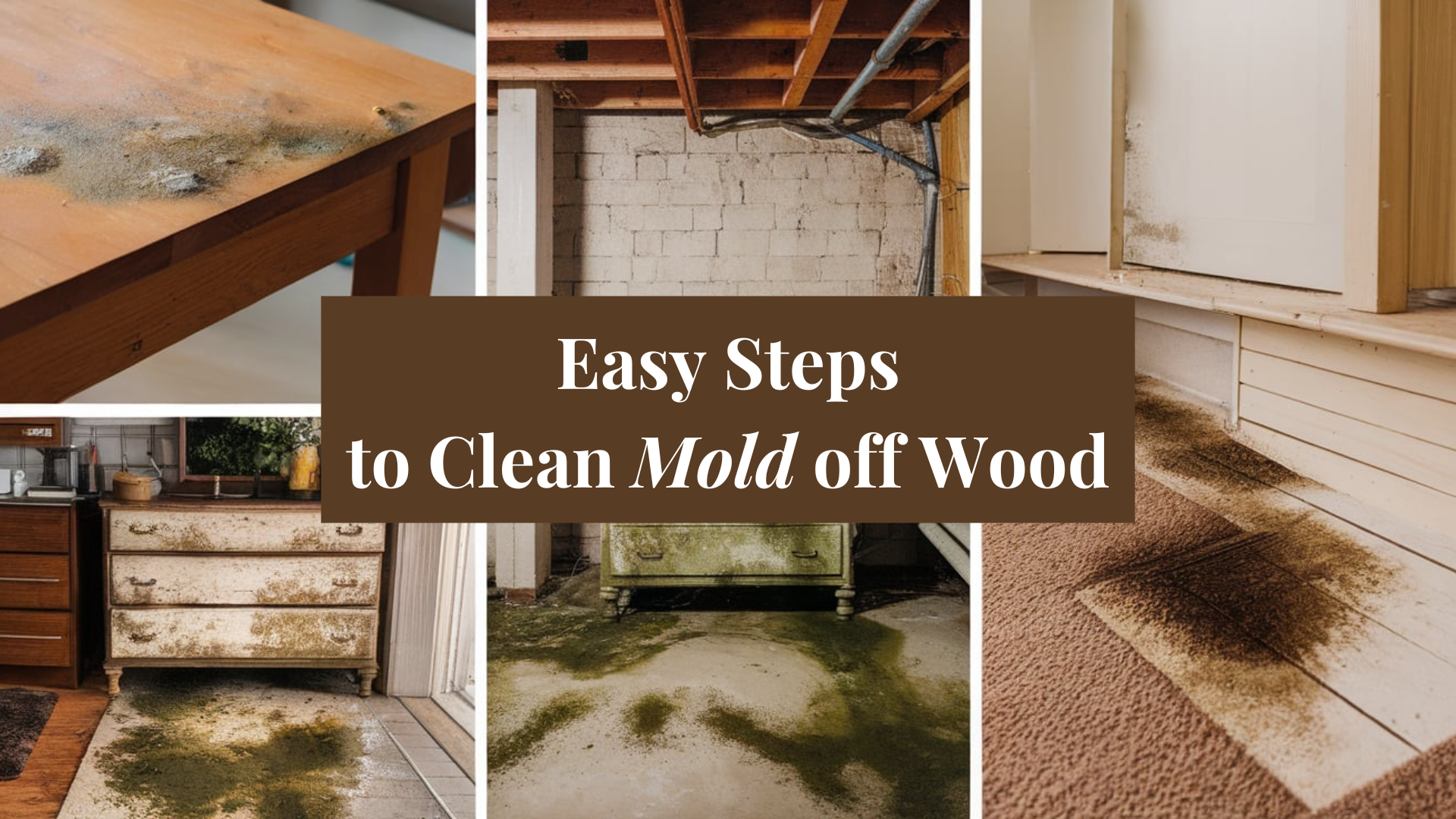Mold on wood can be a big problem, but the good news is, you can usually clean it up yourself. Whether it’s on a wooden table, wall, or floor, mold shows up when there’s too much moisture in the air. It can look fuzzy, slimy, or spotty, and it often smells musty.
If you ignore it, mold can damage the wood and even cause health issues like coughing or allergies. That’s why it’s important to deal with it right away.
In this guide, I’ll show you how to safely and easily clean mold off wood using simple tools and cleaners you probably already have at home. I’ll also discuss how to prevent mold from coming back. Let’s get started and make sure your wood stays clean, safe, and mold-free!
What Causes Mold on Wood?
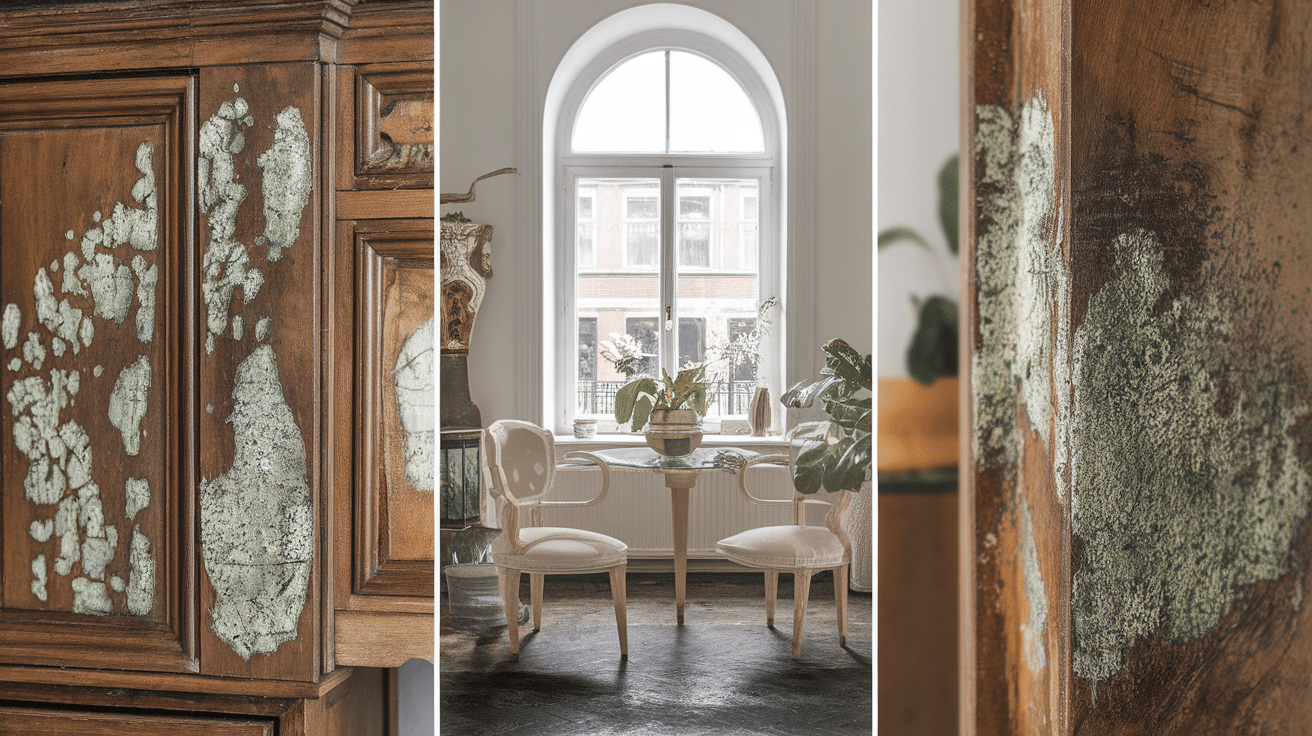
Mold loves warm, damp places. When wood gets wet and doesn’t dry fast, mold can start to grow.
-
Too much moisture in the air: High humidity can make wood damp over time.
-
Water leaks: Leaky pipes, roofs, or windows can drip water onto wood surfaces.
-
Spills that aren’t cleaned up: Water or drink spills that soak into wood can lead to mold.
-
Poor air flow: Mold grows faster in places with little ventilation, like basements or closets.
-
Flooding or water damage: Big water problems can soak the wood and take a long time to dry out.
Keeping wood dry is the best way to stop mold before it starts!
Is Mold on Wood Dangerous?
Yes, mold on wood can be dangerous, especially if you leave it alone for too long. It’s not just an ugly spot—it can cause problems for your health and your home.
-
Health issues: Breathing in mold can bother your nose, throat, or lungs. It might make you sneeze, cough, or feel stuffy. People with asthma or allergies can feel even worse.
-
Damage to the wood: Mold can slowly eat away at the wood, making it weak, soft, or stained.
-
It can spread: If you don’t clean it up, mold can grow in other parts of your home.
The good news is that if you catch it early, it’s usually easy to clean. Just make sure to wear gloves and a mask to protect yourself while cleaning.
Sure! Here’s a simple and informative section for your blog:
Types of Wood Most Likely to Develop Mold
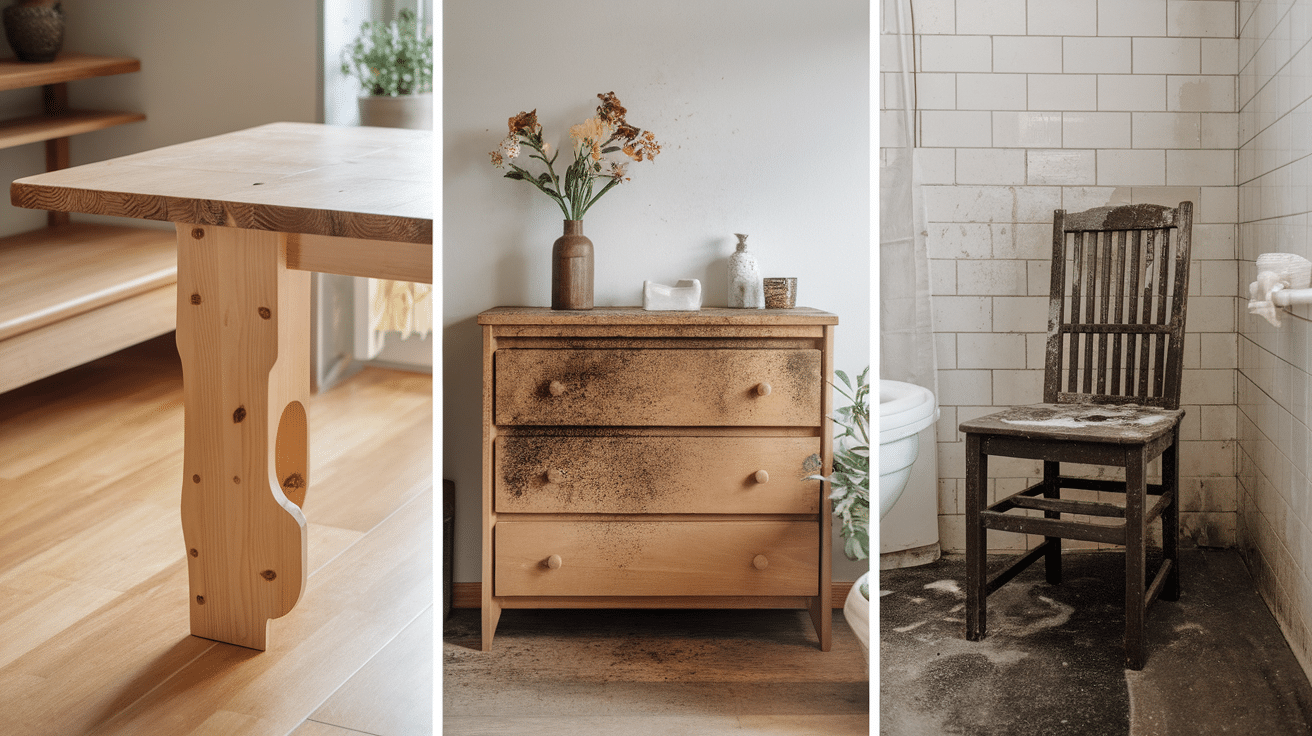
Mold loves to grow on wood, but some types of wood are more likely to attract it than others.
-
Softwoods (like pine, cedar, and fir): Softwoods are more porous and absorb moisture easily, making them prime targets for mold growth.
-
Wood that is unfinished or unsealed: Wood without a protective finish (like varnish or paint) absorbs moisture quicker and is more prone to mold.
-
Wood in damp, dark places: Basements, attics, and bathrooms with poor ventilation can increase mold risk, especially for woods like plywood or MDF (medium-density fiberboard).
-
Older, untreated wood: Over time, untreated wood can become more vulnerable to mold as it breaks down and loses its natural protective oils.
To keep mold away, it’s important to keep wood dry and sealed, especially in high-humidity areas.
How to Identify Mold on Wood
Not sure if that spot on your wood is mold? Here’s how you can tell:
-
Look for strange colors: Mold can be black, green, white, gray, or even yellow.
-
Check for spots or patches: They often look like fuzzy or slimy spots.
-
Smell it: Mold usually has a strong, musty smell (kind of like old socks or a damp basement).
-
Feel the surface: If the wood feels soft or crumbly in places, mold may be destroying it.
-
Watch for changes: If the spot grows or spreads over time, it’s likely mold.
If you’re still not sure, it’s better to treat the area just in case. It’s always safer to clean it than to let it spread.
Tools and Materials You’ll Need
To clean mold off wood, gather these supplies:
-
Rubber gloves – To protect your hands.
-
Face mask – To avoid breathing in mold spores.
-
Soft brush or sponge – For scrubbing.
-
Vacuum with HEPA filter – To remove loose mold spores.
-
Clean cloths or towels – To wipe down and dry the wood.
-
Cleaning solutions: Vinegar, dish soap, borax or bleach
Make sure the area is well-ventilated, and dry the wood thoroughly afterward.
How to Remove Mold from Wood: A Step-by-Step Guide
Cleaning mold off wood might seem tricky, but don’t worry—it’s something you can usually do yourself with a few supplies and a little time. Follow these easy steps to make your wood clean and safe again.
Step 1: Stay Safe
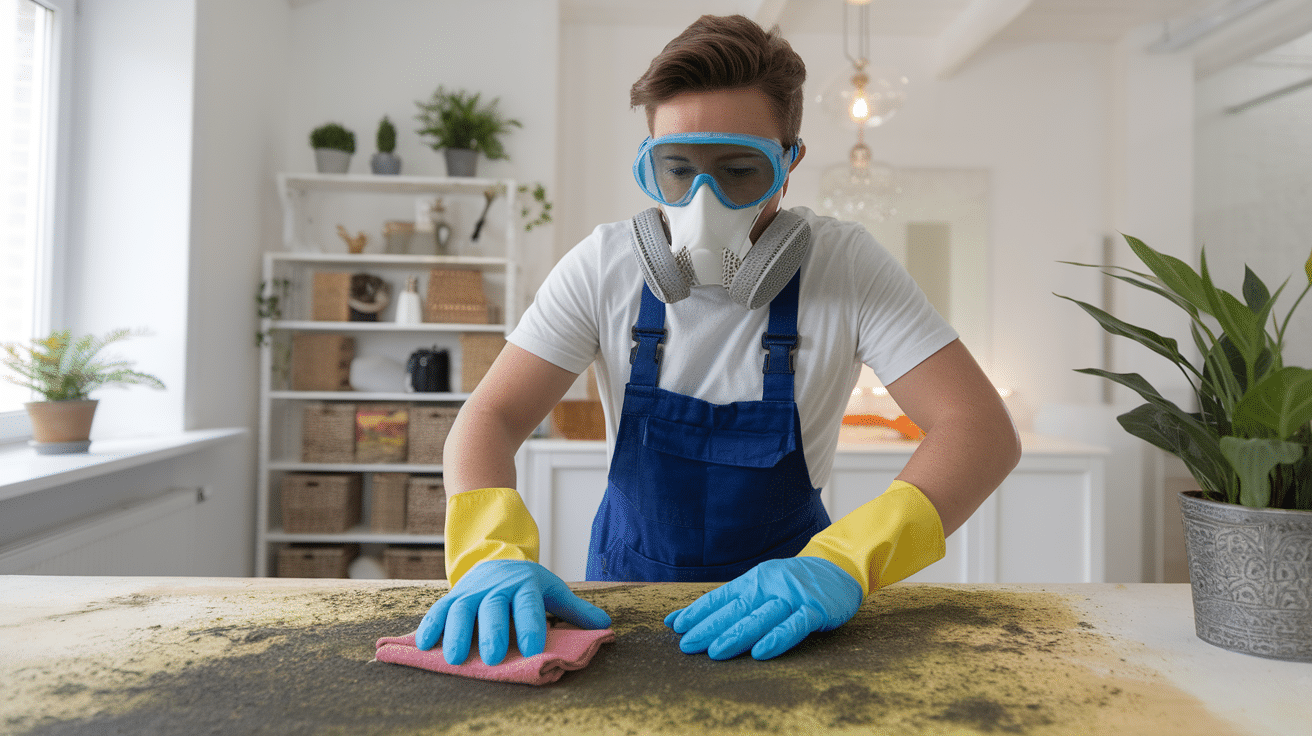
Before you start cleaning, protect yourself.
-
Wear rubber gloves to protect your hands. Use a mask to avoid breathing in mold.
-
Open windows or turn on a fan to let fresh air in. If you’re cleaning a big area, goggles are a good idea, too.
Step 2: Vacuum the Area (Optional but Helpful)
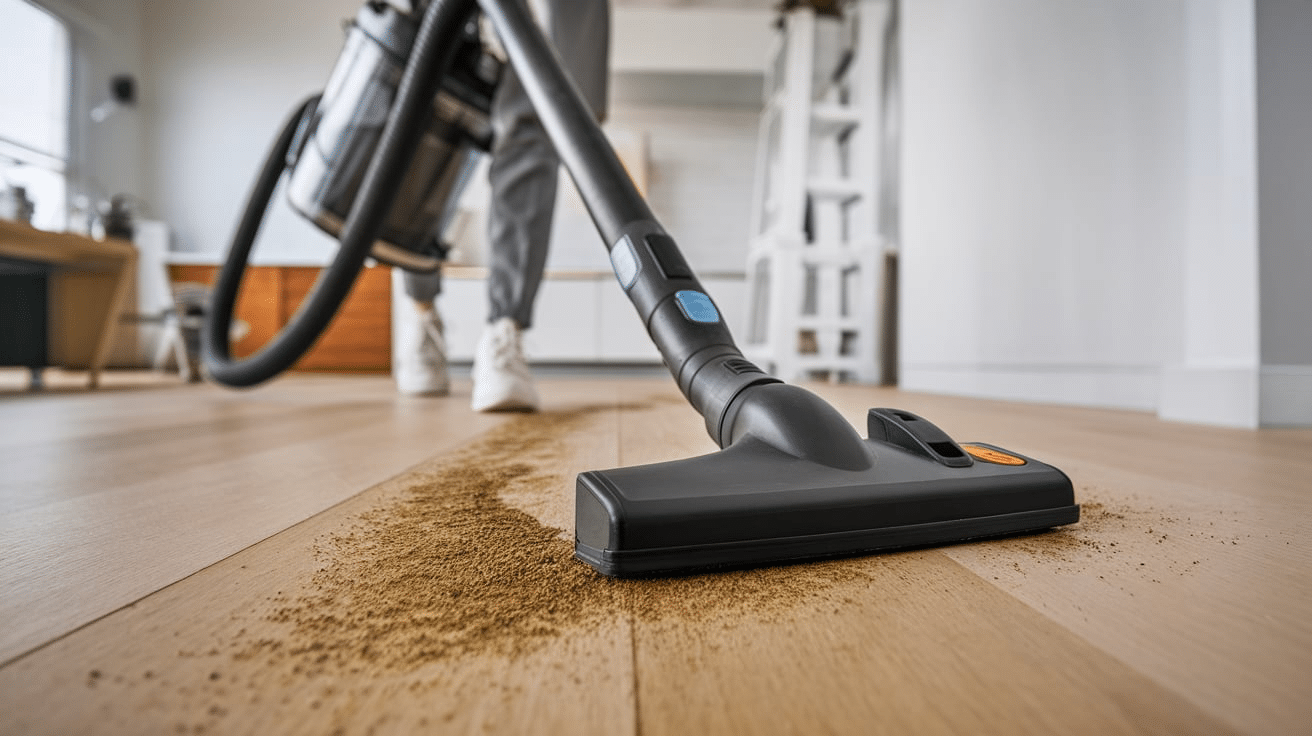
-
If you have a vacuum with a HEPA filter, use it to vacuum the moldy area gently.
-
This helps remove loose mold spores before you start scrubbing.
-
Make sure to empty the vacuum bag or canister outside when you’re done.
Step 3: Choose Your Cleaner
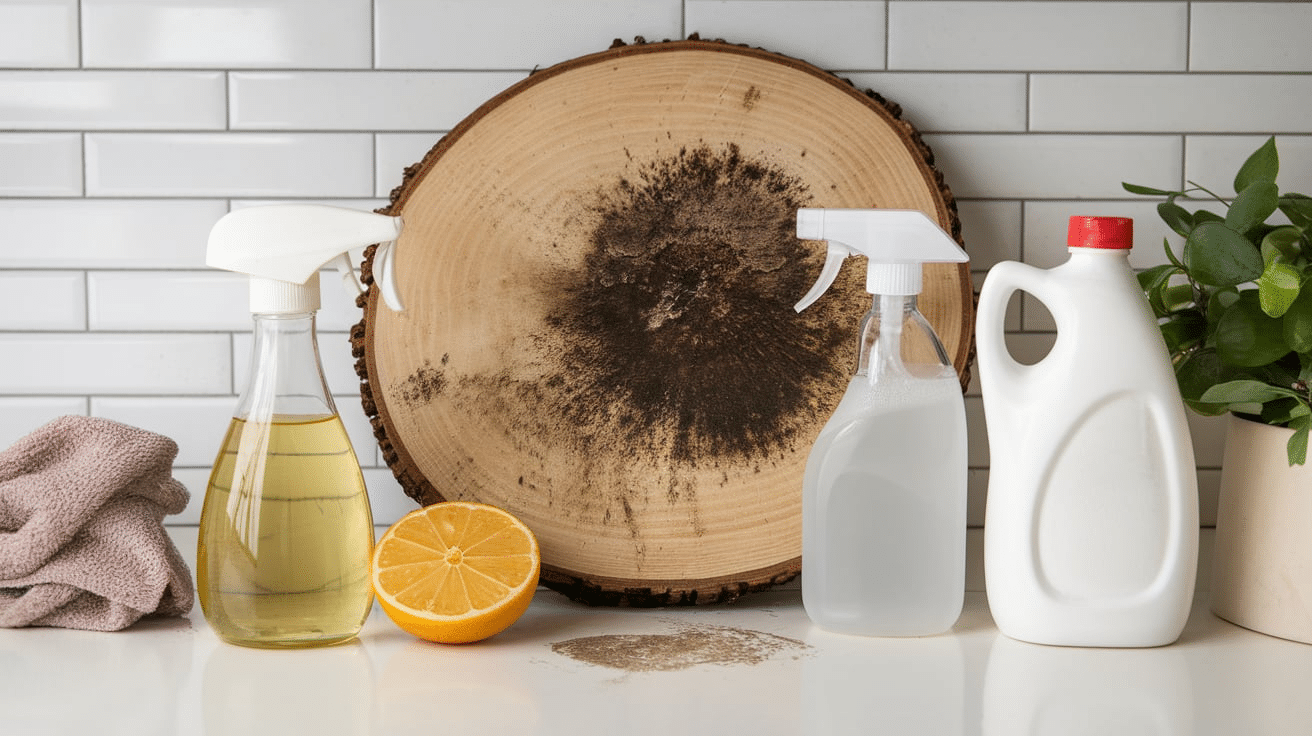
You can use simple cleaners you probably already have at home:
-
Soap and warm water: Good for light mold.
-
White vinegar: Kills most types of mold and is safe on most wood.
-
Borax (mixed with water): Great for deeper mold but stronger smelling.
-
Diluted bleach: Only for non-finished or outdoor wood. Test first—bleach can damage wood.
Step 4: Scrub the Mold
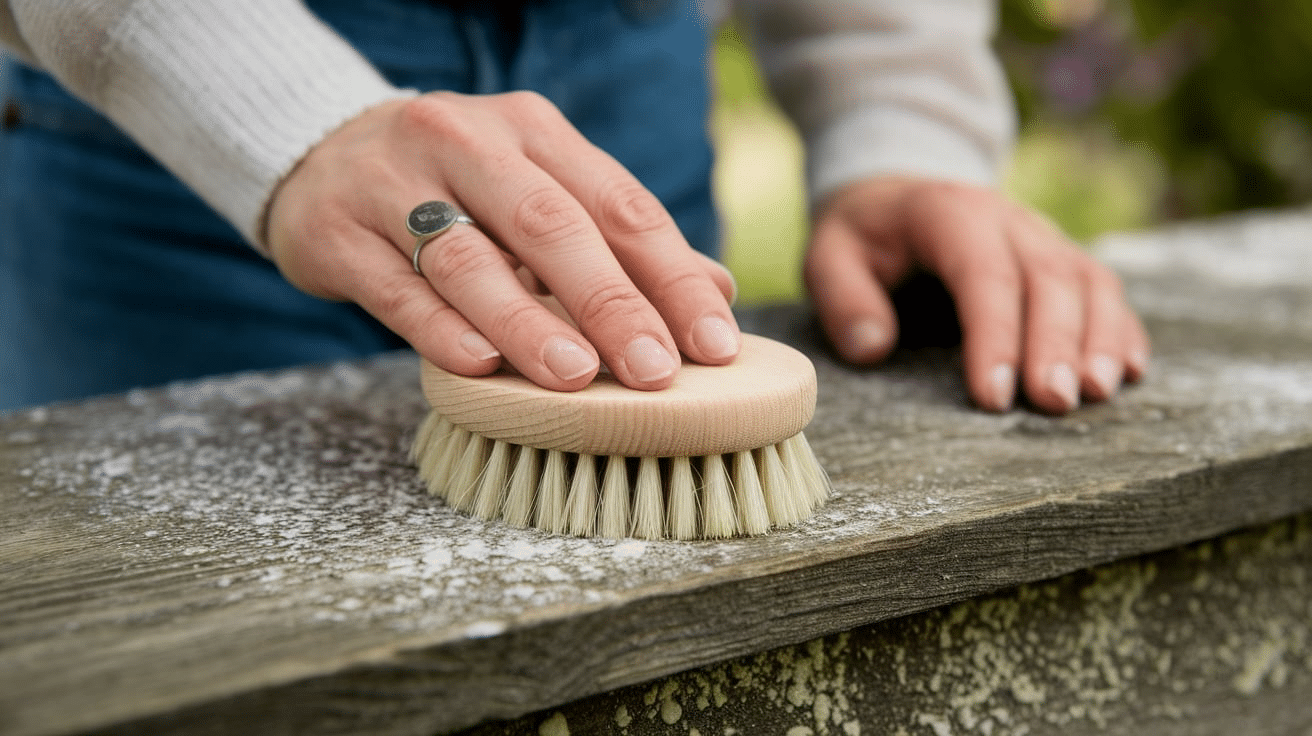
-
Dip a sponge, soft brush, or cloth into your cleaning solution.
-
Gently scrub the moldy area. Don’t soak the wood—use just enough to clean it.
-
For stubborn mold, scrub a little harder or let the cleaner sit for a few minutes.
Step 5: Rinse and Wipe
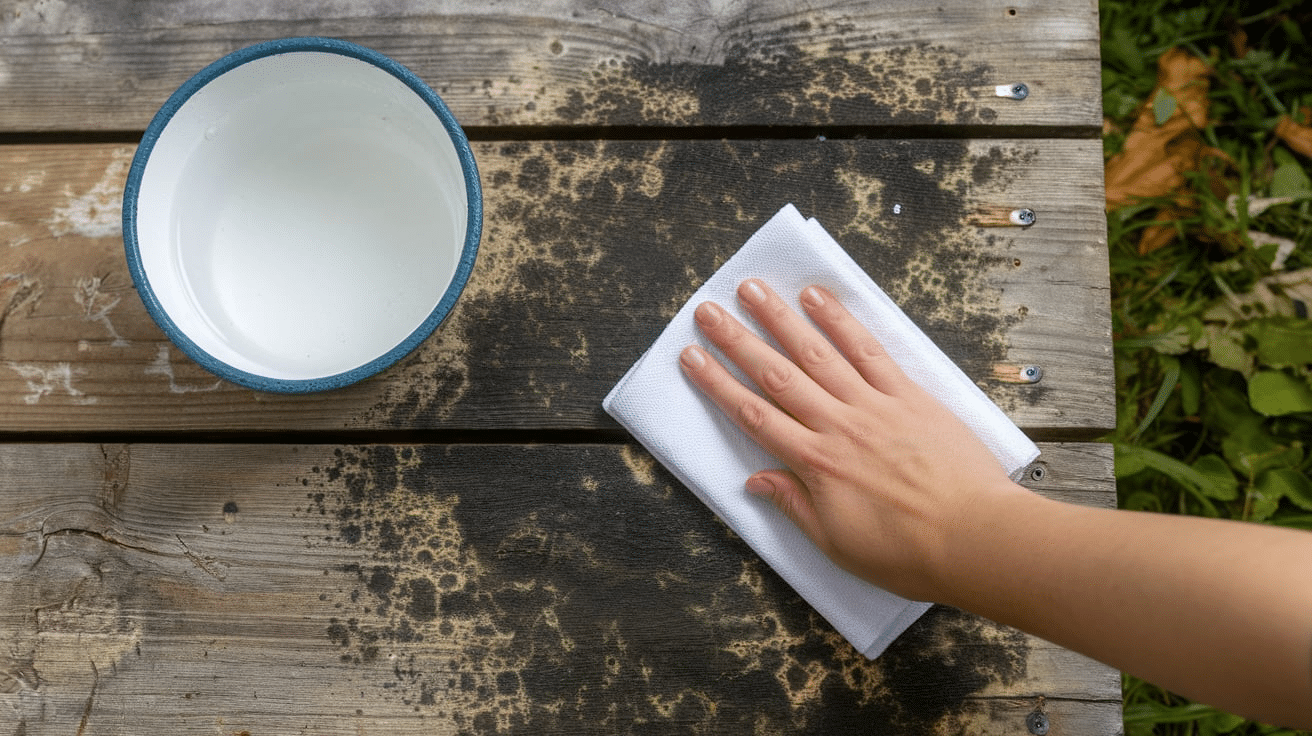
-
After scrubbing, use a clean cloth with water to wipe away any leftover cleaner and mold.
-
Be sure to rinse well, but don’t soak the wood.
Step 6: Dry the Wood Completely
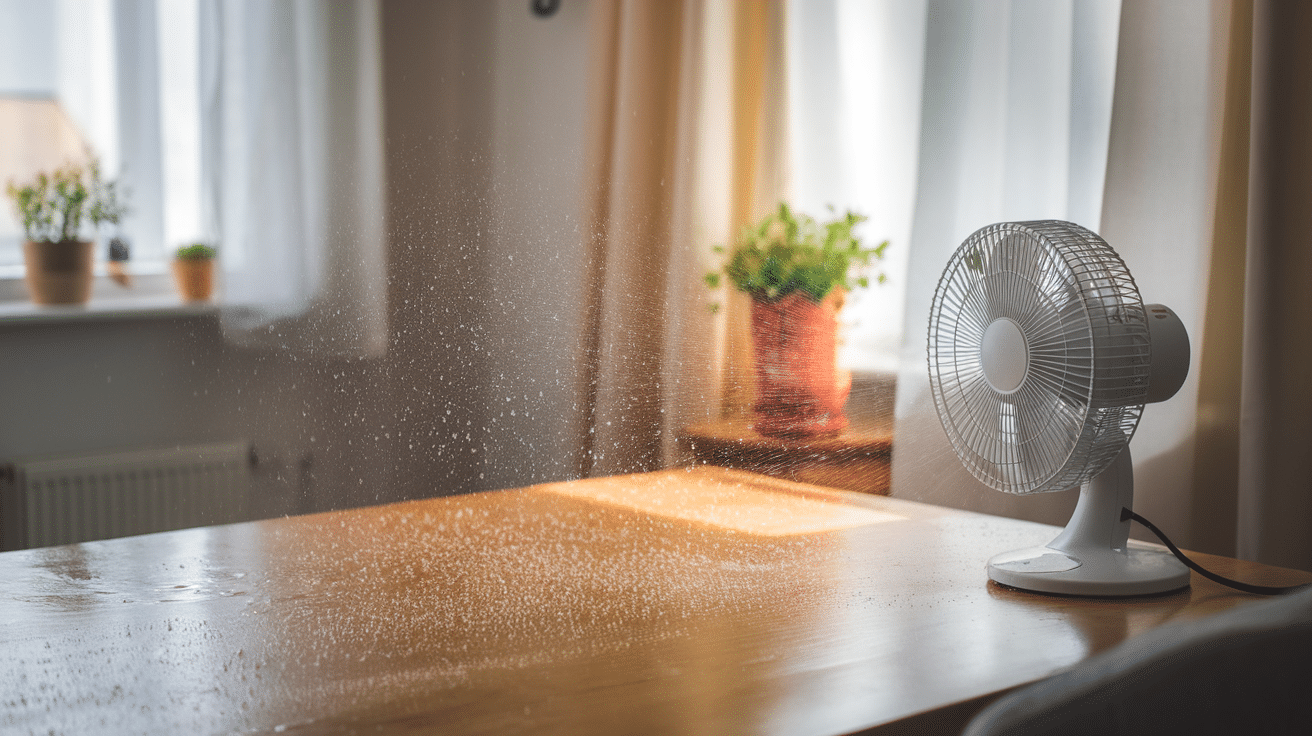
-
Use a towel to dry the wood as much as you can.
-
Then, let it air dry with windows open or a fan blowing on it.
-
You can also use a dehumidifier if the room is really damp.
Step 7: Check for Leftover Mold
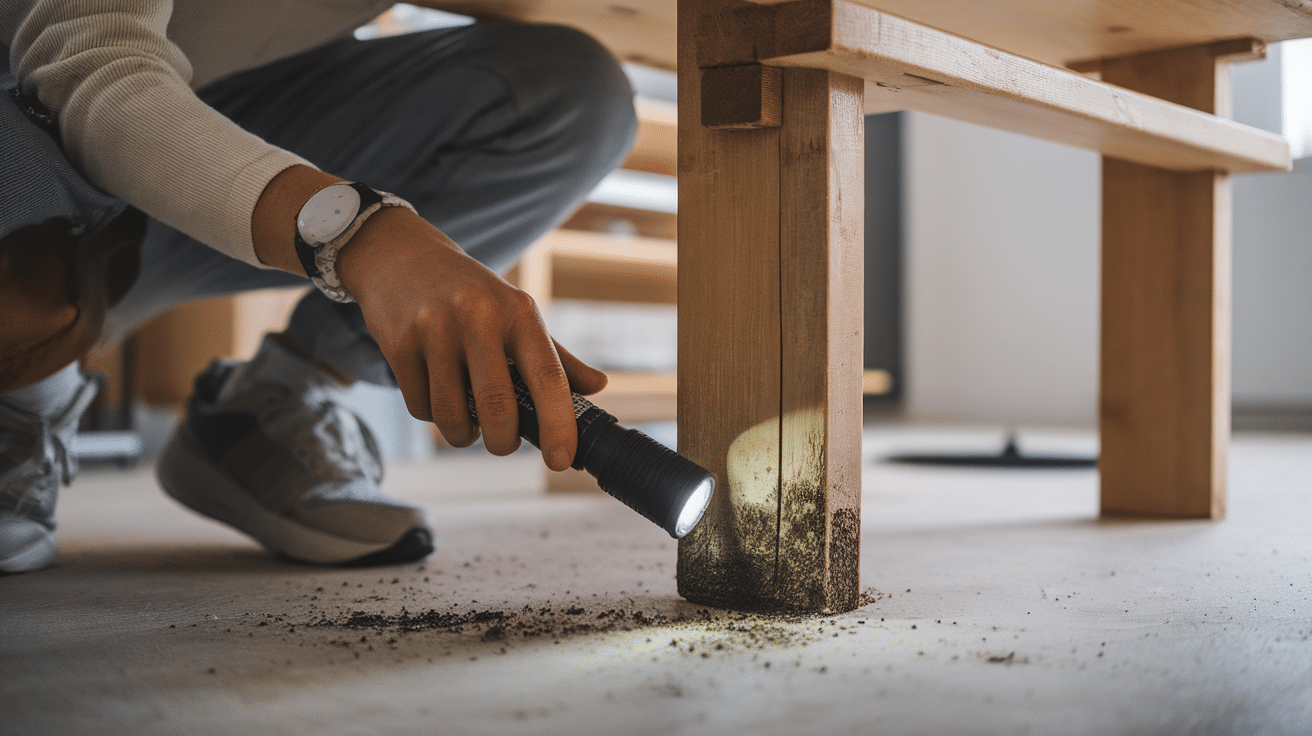
-
After the wood is dry, look closely. If you still see mold, repeat the steps.
-
Sometimes, it takes two rounds to get everything off.
Step 8: Sand (For Deep Mold Only)
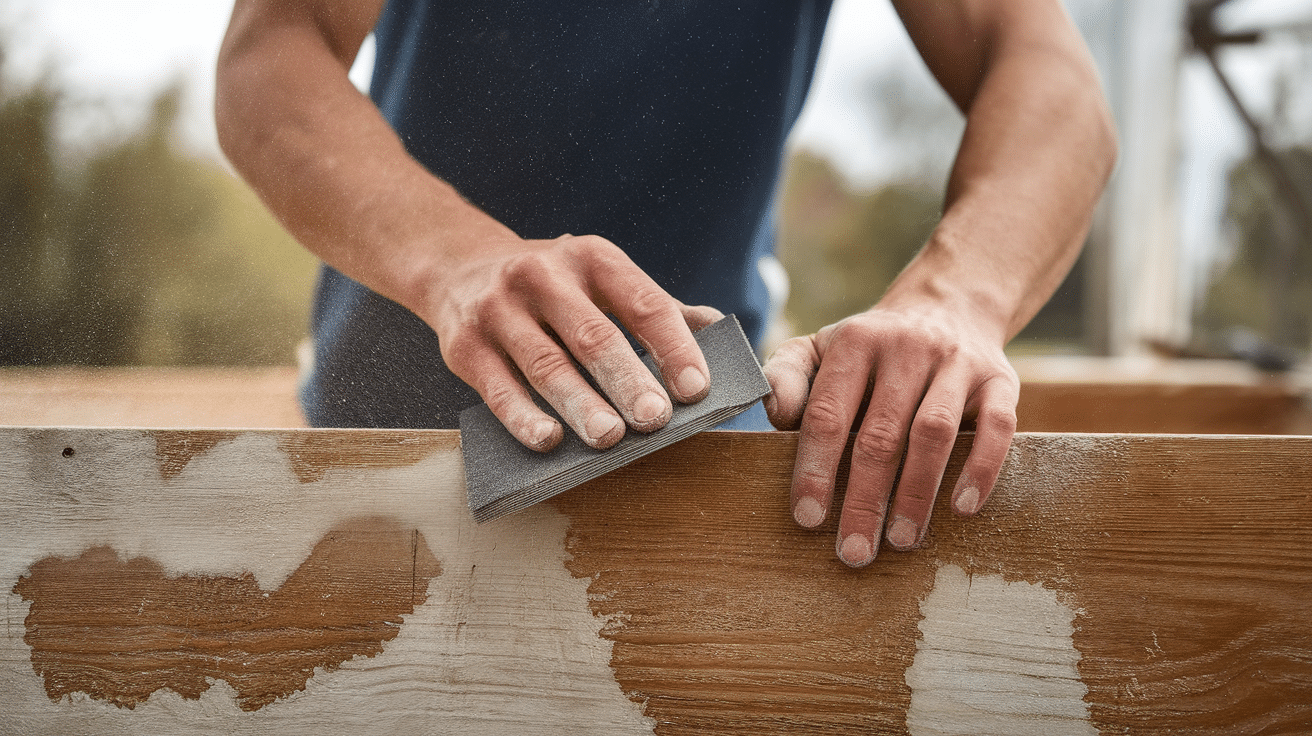
-
If mold has gone deep into unfinished wood, you might need to sand the area lightly.
-
Use fine sandpaper and wear a mask while sanding.
-
After sanding, vacuum the dust and clean the surface again.
That’s it! Once the mold is gone and the wood is dry, you’re all set. To stop mold from coming back, make sure your home stays dry and well-ventilated.
Here’s a short paragraph on preventing mold from returning after cleaning:
Keeping Mold from Returning After Cleaning
Once you’ve cleaned the mold off your wood, it’s important to take steps to keep it from coming back. First, make sure the area stays dry by fixing leaks, wiping up spills immediately, and using a dehumidifier in damp rooms.
Open windows or use fans to increase air circulation and keep the space dry. To protect the wood from moisture, apply a mold-resistant sealant or finish.
Regularly cleaning and maintaining low humidity levels will help prevent mold from regrowing and keep your wood safe and mold-free!
Here’s a simple section on what to do if mold has spread to other parts of your home:
What to Do if Mold Has Spread to Other Parts of Your Home
If mold has spread beyond the wood and is affecting other areas of your home, it’s important to act fast.
First, find the source of moisture, like leaks or high humidity, and fix it to stop the mold from growing further.
Clean small areas of mold with the same methods, but for larger spots (especially if it covers walls, ceilings, or carpets), you may need professional help.
Professionals have the tools to remove mold safely and prevent it from spreading further. If you’re unsure or the mold keeps coming back, it’s always best to call in an expert to ensure your home stays safe and mold-free.
When to Call a Professional
Sometimes, cleaning mold on your own isn’t enough.
-
The mold covers a large area: If it’s bigger than a few square feet, a pro should handle it.
-
The mold keeps coming back: If you’ve cleaned it and it still returns, there might be a bigger issue.
-
You smell mold but can’t find it: This could mean it’s hidden inside walls, ceilings, or floors.
-
The wood is soft, rotting, or badly damaged: A pro can check if it’s safe or needs replacing.
-
If you or your family have allergies or asthma, it’s safer to get help. Mold can make health problems worse.
It’s okay to ask for help—professionals have the tools and know-how to fix mold problems safely.
How to Prevent Mold Growth on Wood
Once you’ve cleaned the mold, you’ll want to keep it from coming back.
-
Keep things dry: Mold needs moisture to grow. Wipe up spills right away and fix any leaks fast.
-
Use a dehumidifier: If your room feels damp, a dehumidifier can help remove extra moisture from the air.
-
Let air move: Open windows or use fans to keep fresh air flowing, especially in bathrooms, basements, and closets.
-
Don’t store wet stuff on wood: Wet clothes, towels, or gear can soak into the wood and start molding.
-
Clean regularly: Dust and wipe down wood surfaces to stop mold spores from settling in.
-
Seal the wood: Use a wood sealant or paint that resists moisture, especially on outdoor furniture or in damp rooms.
Keeping wood dry and clean is the best way to stop mold in its tracks!
Conclusion
Mold on wood might look scary, but with the right steps, you can clean it up and prevent it from coming back. The most important thing is to act fast. The longer mold sits, the more damage it can do to your wood and your health.
By using simple cleaners like vinegar or soap, drying the area well, and making sure your space stays dry, you can handle most small mold problems on your own. Don’t forget to wear gloves and a mask to protect yourself while cleaning.
If the mold keeps returning or covers a large area, it’s okay to call a professional for help. After the mold is gone, do your best to keep things clean and dry.
Good airflow, low humidity, and quick spill cleanup all make a big difference. With a little effort, your wood can stay clean, safe, and mold-free for the long run!
Frequently Asked Questions
What if the mold keeps coming back?
If mold returns after cleaning, there might be too much moisture in the area. Check for leaks or high humidity. You might need a dehumidifier or help from a professional.
Can mold grow on sealed wood?
Mold can still grow on sealed wood if there’s enough moisture trapped under the surface or if the sealant gets damaged. However, a good sealant can help prevent mold by keeping moisture away from the wood.
Can mold on wood be completely removed?
In most cases, yes! With the right cleaning methods and some patience, you can completely remove mold from wood. However, if the wood is severely damaged, some pieces may need to be replaced.

